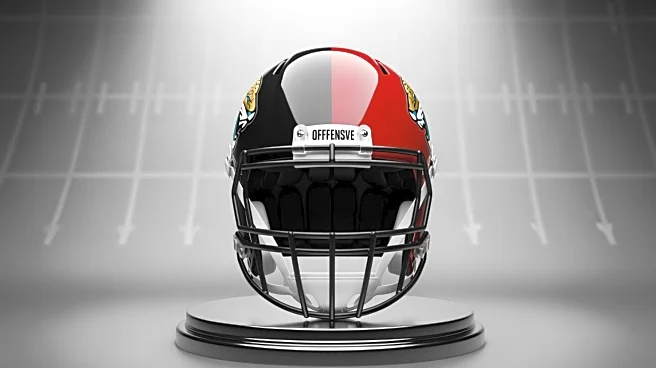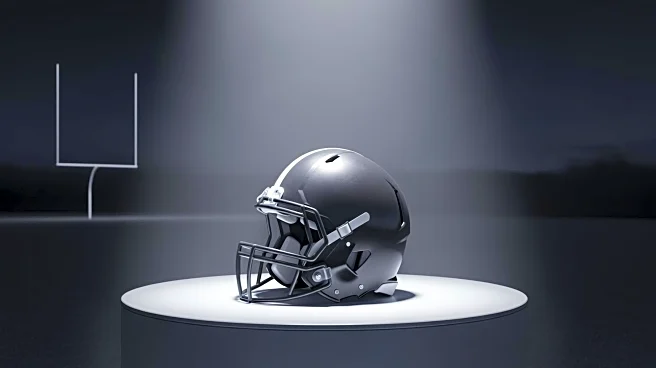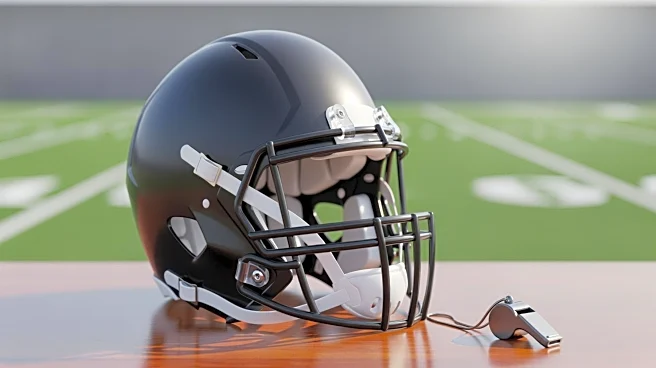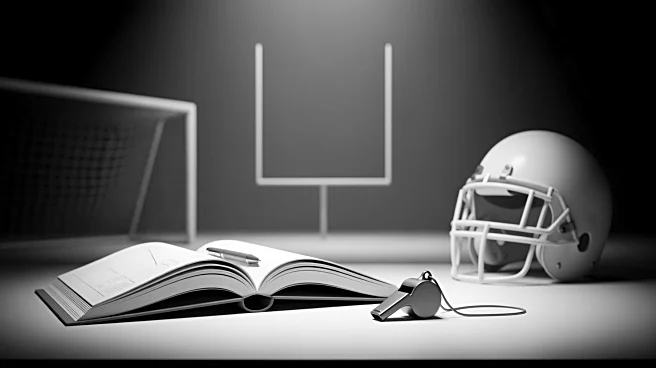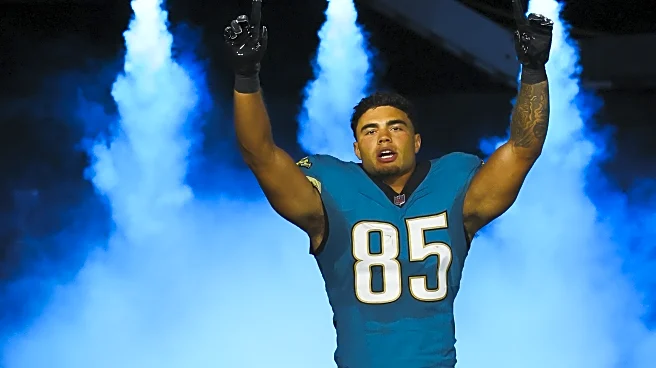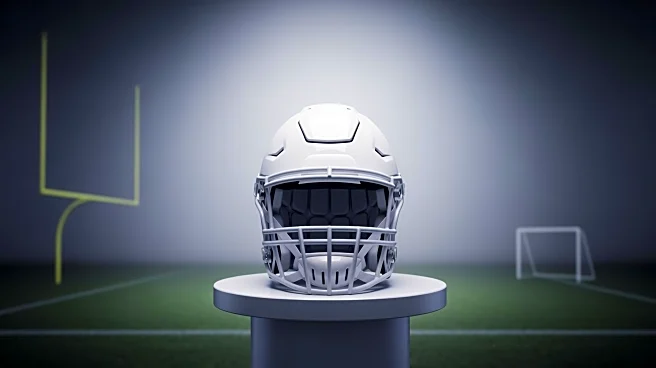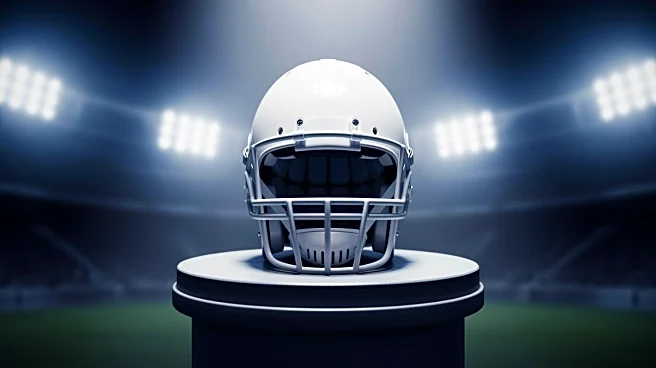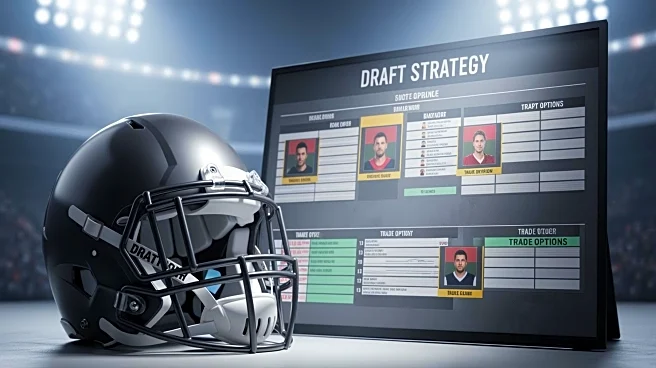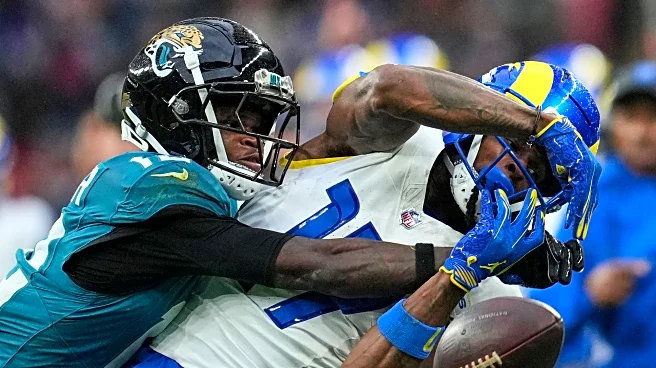What's Happening?
Travis Hunter, a rookie wide receiver for the Jacksonville Jaguars, has suffered a season-ending knee injury during practice, requiring surgery to repair his LCL. Despite this setback, the Jaguars are
committed to their plan of utilizing Hunter in a two-way role, playing both offense and defense. Hunter's injury occurred at a critical time when he was expected to increase his contributions as a wide receiver. Jaguars coach Liam Coen stated that it is premature to decide Hunter's future role, emphasizing that the team will evaluate his performance at the end of the season.
Why It's Important?
Hunter's injury is significant for the Jaguars as it disrupts their plans to leverage his unique ability to play both offense and defense, a strategy aimed at gaining a competitive edge. The Jaguars invested heavily in Hunter, trading assets to draft him, and his absence could impact their performance and strategic planning. The injury also raises concerns about Hunter's durability, given his extensive usage in college. The team's decision to continue the two-way experiment reflects their belief in Hunter's potential to transform their gameplay and challenge opponents with unpredictable strategies.
What's Next?
The Jaguars will focus on Hunter's rehabilitation and evaluate his role at the end of the season. Meanwhile, they face the challenge of adjusting their strategies without Hunter's dual capabilities. The team will also monitor Hunter's recovery closely, as future injuries could force them to reconsider the viability of the two-way experiment. The Jaguars' coaching staff and front office will need to assess the impact of Hunter's absence on their overall performance and make necessary adjustments to their roster and game plans.
Beyond the Headlines
Hunter's injury highlights the risks associated with the two-way player model in the NFL, where physical demands are high. The Jaguars' commitment to this experiment underscores their pursuit of innovation in gameplay, but it also poses ethical questions about player health and safety. Long-term, the success or failure of this approach could influence other teams' strategies and the development of future players capable of playing both offense and defense.
